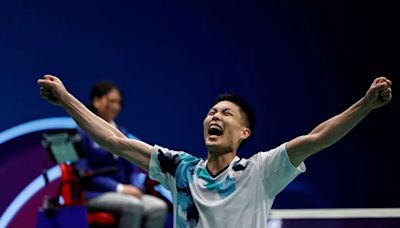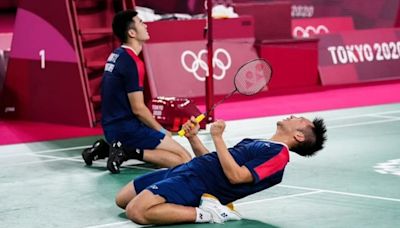搜尋結果
House of the Dragon is an American fantasy drama television series created by George R. R. Martin and Ryan Condal for HBO. A prequel to Game of Thrones (2011–2019), it is the second television series in the A Song of Ice and Fire franchise. Condal and Miguel Sapochnik served as the showrunners for the first season.
- Fire & Blood, by George R. R. Martin
- Ramin Djawadi
Diane Setterfield (born 22 August 1964) is an English author whose 2006 debut novel, The Thirteenth Tale, became a New York Times No. 1 best-seller. Setterfield won the 2007 Quill Award, debut author of the year, for the novel.It is written in the Gothic tradition, with echoes of Brontë sisters' Jane Eyre (1847) and Wuthering Heights (1847).
- British
- 2006–present
- Novelist
- Gothic, Suspense
- Name and Interpretation
- Historical Representations
- Modern References
- References
The term derives from Ancient Greek οὐροβόρος, from οὐρά oura 'tail' plus -βορός -boros'-eating'. The ouroboros is often interpreted as a symbol for eternal cyclic renewal or a cycle of life, death and rebirth; the snake's skin-sloughing symbolises the transmigration of souls. The snake biting its own tail is a fertility symbol in some religions: t...
Ancient Egypt
One of the earliest known ouroboros motifs is found in the Enigmatic Book of the Netherworld, an ancient Egyptian funerary text in KV62, the tomb of Tutankhamun, in the 14th century BCE. The text concerns the actions of Ra and his union with Osiris in the underworld. The ouroboros is depicted twice on the figure: holding their tails in their mouths, one encircling the head and upper chest, the other surrounding the feet of a large figure, which may represent the unified Ra-Osiris (Osiris born...
Gnosticism and alchemy
In Gnosticism, a serpent biting its tail symbolised eternity and the soul of the world. The Gnostic Pistis Sophia(c. 400 CE) describes the ouroboros as a twelve-part dragon surrounding the world with its tail in its mouth. The famous ouroboros drawing from the early alchemical text, The Chrysopoeia of Cleopatra (Κλεοπάτρας χρυσοποιία), probably originally dating to the 3rd century Alexandria, but first known in a 10th-century copy, encloses the words hen to pan (ἓν τὸ πᾶν), "the all is one"....
World serpent in mythology
In Norse mythology, the ouroboros appears as the serpent Jörmungandr, one of the three children of Loki and Angrboda, which grew so large that it could encircle the world and grasp its tail in its teeth. In the legends of Ragnar Lodbrok, such as Ragnarssona þáttr, the Geatish king Herraud gives a small lindworm as a gift to his daughter Þóra Town-Hart after which it grows into a large serpent which encircles the girl's bower and bites itself in the tail. The serpent is slain by Ragnar Lodbrok...
Jungian psychology
Swiss psychiatrist Carl Jung saw the ouroboros as an archetype and the basic mandala of alchemy. Jung also defined the relationship of the ouroboros to alchemy: Carl Jung, Collected Works, Vol. 14 para. 513. The Jungian psychologist Erich Neumannwrites of it as a representation of the pre-ego "dawn state", depicting the undifferentiated infancy experience of both humankind and the individual child.
Kekulé's dream
The German organic chemist August Kekulé described the eureka moment when he realised the structure of benzene, after he saw a vision of Ouroboros:
Cosmos
Martin Rees used the ouroboros to illustrate the various scales of the universe, ranging from 10−20 cm (subatomic) at the tail, up to 1025 cm (supragalactic) at the head. Rees stressed "the intimate links between the microworld and the cosmos, symbolised by the ouraborus", as tail and head meet to complete the circle.
Bibliography
1. Bayley, Harold S (1909). New Light on the Renaissance. Kessinger. Reference pages hosted by the University of Pennsylvania{{cite book}}: CS1 maint: postscript (link) 2. Hornung, Erik (2002). The Secret Lore of Egypt: Its Impact on the West. Cornell University Press. 3. Liddell, Henry George; Scott, Robert (1940). A Greek-English Lexicon. Oxford: Clarendon Press – via perseus.tufts.edu.
Charlize Theron ( / ʃɑːrˈliːz ˈθɛrən / shar-LEEZ THERR-ən; [1] Afrikaans: [ʃarˈlis ˈtrɔn]; [2] born 7 August 1975) is a South African [3] and American actress and producer. One of the world's highest-paid actresses, she is the recipient of various accolades, including an Academy Award and a Golden Globe Award. [4]
Viktor Axelsen (born 4 January 1994) is a Danish badminton player who is the current number one ranked men's singles player in the world. [2] . He is a two-time World Championship gold medalist, defeating Lin Dan in 2017 final and Kunlavut Vitidsarn in 2022 final. He is also the reigning Olympic Champion, having won at the 2020 event. [3]
Arman Tsarukyan ( Armenian: Արման Նաիրիի Ծառուկյան; born October 11, 1996) is an Armenian professional mixed martial artist. He currently competes in the Lightweight division in the Ultimate Fighting Championship (UFC). As of April 16, 2024, he is #1 in the UFC lightweight rankings. [7] Background.
Poseidon greeting Theseus (on the right). Detail, Attic red-figured calyx-krater by Syriscos Painter, 450-500BC from Agrigento. BnF Museum (Cabinet des médailles), Paris Poseidon (/ p ə ˈ s aɪ d ən, p ɒ-, p oʊ-/; Greek: Ποσειδῶν) is one of the Twelve Olympians in ancient Greek religion and mythology, presiding over the sea, storms, earthquakes and horses.


